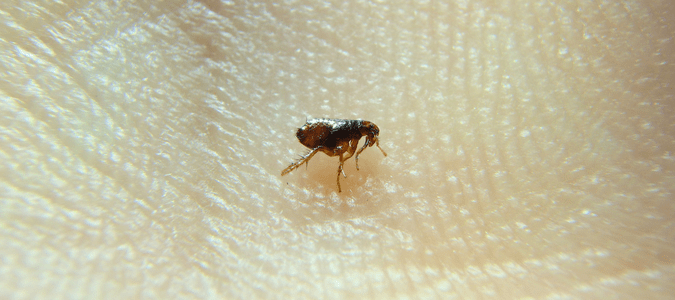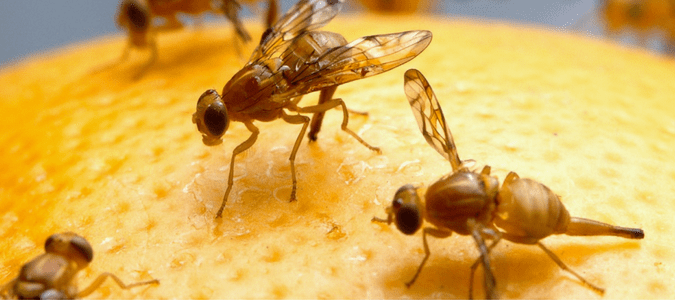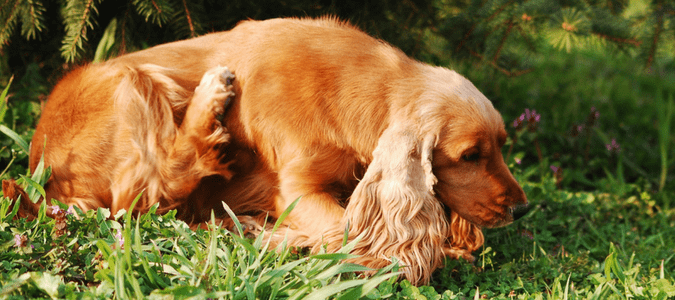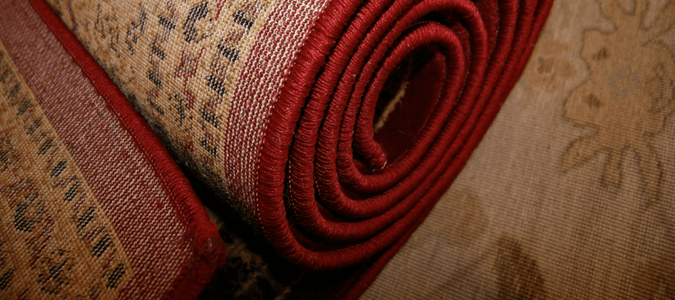
Do you live with a furry pet? If so, whether you have a dog, cat, ferret, guinea pig or something else, there’s a possibility that you are also living with fleas. This is true even if you are meticulous about cleaning your home and bathing your pet. Furthermore, the risk of a flea infestation increases if your pet spends time both indoors and outdoors.
Unfortunately, it’s also possible to have a flea infestation in your home even if you don’t have pets. If squirrels, rats or other rodents make a nest or get trapped inside your attic or walls, they can carry fleas that travel into your living spaces in search of a human blood meal.
A flea infestation is a highly undesirable situation. Not only are flea bites itchy and annoying at best, these tiny parasites can also cause health problems in dogs and other animals such as anemia, hair loss or an allergic rash (known as flea rash dermatitis). Fleas can even carry infectious diseases.
If you’re dealing with a flea infestation in your home, you may be wondering what’s the best way to banish these unwelcome pests for good. You might also wonder how they seem so adept at moving so fast and so far—do fleas have wings?
Although these pests do not have wings and therefore cannot fly, they are expert jumpers, which helps them quickly spread throughout your home and yard. Let’s learn more about these tiny, terrible critters, including how to keep them away from your home and yard.

What Do Fleas Look Like?
First, if you’re trying to figure out whether you have a flea problem, you need to be able to identify these very small insects. So what do fleas look like? Fleas are tiny, dark-brown or black insects that are often compared to a poppy seed or a pepper flake. Adult fleas are visible to the naked eye, but barely.
They grow to about one millimeter in length, at most, and they have tiny, powerful legs that they use to leap and crawl around. Interestingly, the height that adult fleas can reach on a jump is several inches in the air (over 80 times their own height!), and they can jump over a foot horizontally.
Contrary to what many people believe, as we already mentioned, fleas do not have wings, so they can’t fly. They can only jump high and far. If you see or are bitten by something that looks like a flea but has wings, it’s definitely not a flea. So what are some bugs that look like fleas with wings?

Bugs That Look Like Fleas With Wings
If you think you may have a flea problem, but the insects you’ve spotted have wings, there might be another type of pest inhabiting your home or garden. Several different types of bugs resemble fleas with wings. These creatures include fruit flies, which tend to be found flying around kitchens, since they feed on rotting fruit, and fungus gnats, which are tiny flies that, when found indoors, are typically spotted hanging around the houseplants they feed on.
Certain other insects look and behave like fleas, but do not have wings; these include springtails, which are tiny insects that jump, just like fleas do. Springtails can grow to quite a bit larger in size than fleas can, and they normally live outside. Furthermore, springtails don’t bite, as they don’t feed on human or animal blood.

What To Do If You Have Fleas In Your House Or Yard
Given the chance, fleas can live quite a bit longer in the comfort of your home than they can outdoors. Most outdoor fleas die off when winter weather gets cold or when the temperature dips below about 30 degrees Fahrenheit. Since most people keep their homes comfortably heated during the winter, however, indoor fleas won’t die off even when it’s frigid outside. In fact, given the right temperature and other conditions, fleas can live for many months inside—even up to a year! Considering that adult female fleas might lay 500 eggs or more in their lifetimes, it’s clear why it is so important to eliminate fleas from your pets and living spaces in all stages of their life cycle, including flea eggs, larvae, pupae and adults.
When fleas infest a home, there are a few do-it-yourself methods that homeowners can try to get rid of them. Before we delve into those methods, however, let’s first learn about the telltale signs that your pet, and therefore your living space, has a flea problem.
Signs That Your Pet Has Fleas
Dog and cat owners are accustomed to their pet scratching on occasion. With that in mind, how do you know when your furry family member’s really suffering? Here are some signs to look for:
- Your pet scratches frequently, or more than usual.
- Your pet has visible insect bites on his skin which resemble randomly spaced red welts and which may be small or large, depending on any allergic reaction your pet may have to the bites.
- You spot “flea dirt” in your pet’s fur or bedding, or anyplace where your pet spends lots of time. Flea dirt is actually flea feces, which is a mixture of digested blood and insect waste; it looks like tiny bits of black dirt or pepper. Flea dirt is most likely to accumulate on the areas of your pet’s body where fleas are most likely to congregate; for dogs and cats, this is usually around the base of the tail, between the hind legs and up the center or sides of the belly. Flea dirt can also accumulate in your pet’s bed or kennel, or on a couch or chair where your pet likes to curl up.
- Your pet develops a red, flaky, itchy rash on his belly, between his hind legs or around the base of his tail. This could be atopic dermatitis, an allergic reaction to flea bites.
Other Warning Signs Of A Flea Infestation
Here are a few other red flags that might indicate that you may have a flea problem in your home, or even a full-on infestation:
- You feel tiny tickles on your feet, ankles or other areas of your skin, but when you look, you don’t see anything—or you spot a tiny black speck for just a moment before it’s gone.
- You have small, red, itchy bites on your skin, often on your feet or ankles.
- You notice any of the above signs (a tickle or an itch, a small red welt or an actual flea sighting), particularly when spending time on a certain chair, sofa or bed where your pet also spends time.
- You can hear noises in your walls or attic that indicate an animal has built a nest or perhaps gotten trapped inside, and you notice any of the above other signs (itchy bites, flea sightings, etc.).
If you suspect a flea infestation but you aren’t certain, your best bet is to bring in a pest professional. An experienced technician can conduct a thorough inspection to determine the presence of fleas, or any other type of pest, and recommend a treatment plan.
If you have seen many of the signs we’ve already mentioned and want to first see what you can do on your own before calling in a professional, your first order of business is to treat your pet. Start by brushing your dog or cat’s coat with a special flea comb and then placing the comb in soapy, hot water to kill both the fleas and their eggs. Afterward, give your pet a bath, using a flea shampoo recommended by your veterinarian, making sure to follow all the directions on the product label. Once your dog or cat is dried off, apply a flea repellent. Schedule an appointment with your vet to make sure the treatments are working.
To address fleas that might be lurking in your carpet, thoroughly vacuum all the fabrics your pets regularly come into contact with. Immediately place the vacuum bag in your trash outside to make sure no fleas come back inside. If your pet gets on your bed or couch, wash all your bedding, blankets, pillows, duvet covers and throw pillows in your washing machine’s hottest cycle.
Outside, fleas are attracted to moisture, so check your lawn for damp or wet areas and keep your outdoor spaces free of debris, including grass clippings. You can experiment with different types of landscaping products that have been found to deter fleas or see if adding nematodes to your yard helps keeps fleas away.
Note that if a rodent, snake or other wild animal gets into your attic, walls, basement or another area of your home, it’s important to take steps to remove them as soon as possible. You can try setting out bait or traps for them, and it’s always a good idea to find the place where they might have gotten in so you can block it off. Just keep in mind that in doing so, you might be trapping the animals inside, in addition to preventing other animals from entering in the future. For this reason and others, including safety issues, it may be best to call an animal and pest removal specialist to handle the job for you.

How To Prevent Fleas In The House
It’s much easier to keep fleas away than it is to get rid of them once they’ve moved in. When trying to control and eliminate fleas, it’s extremely important to treat them at all stages of their life cycle, including eggs, larvae and pupae, not just adult fleas. Adult fleas may be the ones driving you and your pets crazy with their itchy bites, but flea eggs, larvae and pupae are flea adults-in-waiting, and must also be eliminated if you want to stop an infestation.
If you live with animals, regular visits to the veterinary clinic can go a long way toward controlling fleas. Your vet can work with you to determine the right combination of medications and lifestyle options to keep your fluffy friend healthy and flea-free. Bathing pets regularly is also an important part of flea control; you might choose to use medicated shampoos that are specifically designed to kill off fleas, or to follow up with different home remedies for dog fleas, including baths with an apple cider vinegar rinse, as this type of vinegar can be effective in repelling fleas.
Whether you have pets or not, some of the same methods to treat for fleas are also effective ways to keep your home flea-free. Here are a few suggestions for homeowners wanting to avoid a future infestation:
- Vacuum regularly (preferably at least once a week), paying closest attention to carpeted areas, rugs and any furniture where pets spend time. While fleas need an animal host to feed on in order to survive, their eggs and larvae can survive for days or even weeks in carpet, or in the folds of your furniture, without access to food.
- Consider occasional steam-cleaning of carpets or taking rugs to be cleaned once a year to eliminate flea eggs, larvae and pupae.
- Wash bedding, including pet bedding, at least once a week. Washing in hot water and then drying on the hottest setting can kill off many fleas and their offspring.
- Consider using products like diatomaceous earth to keep fleas at bay.
Trust ABC To Handle Your Flea Problem
If you’ve tried DIY flea control methods and you’re still battling against these tiny pests, your best bet is to call ABC Home & Commercial Services for help. Our pest control specialists have a proven track record of diagnosing pest problems and eliminating them effectively, often in a single treatment. If your flea problem originates with animals that have gotten trapped or built a nest in your walls, attic or other areas of your home, we can also work with you to develop a humane and eco-friendly plan to evict these unwanted houseguests. Whatever the source of your flea infestation might be, our exterminators can treat both indoors and outdoors for fleas and any other pests that threaten your quality of life. We will do a thorough inspection and develop a plan that works for you, your family and your lifestyle, so you can enjoy your home both itch- and worry-free.